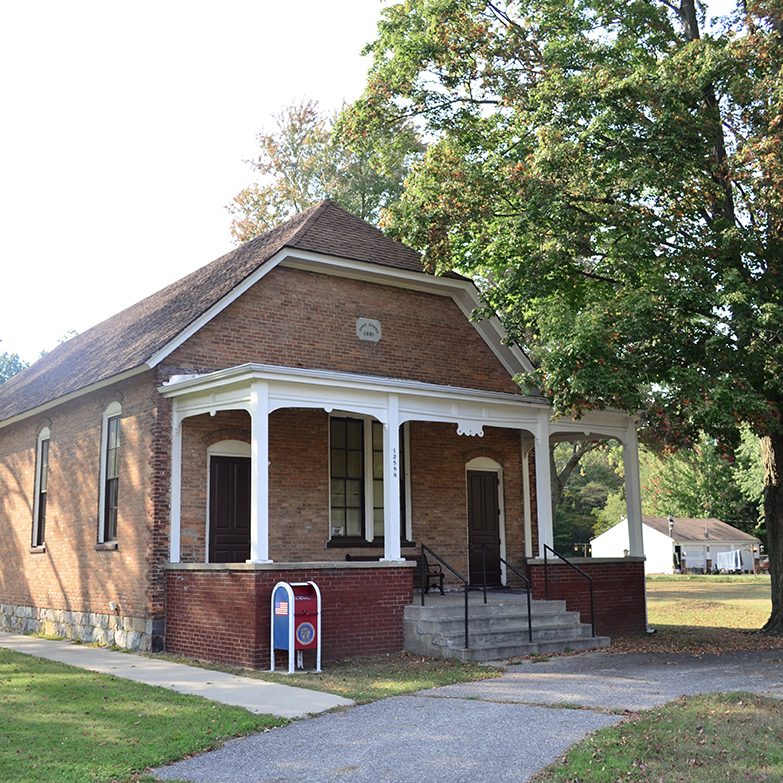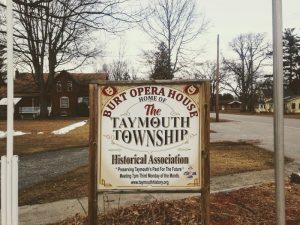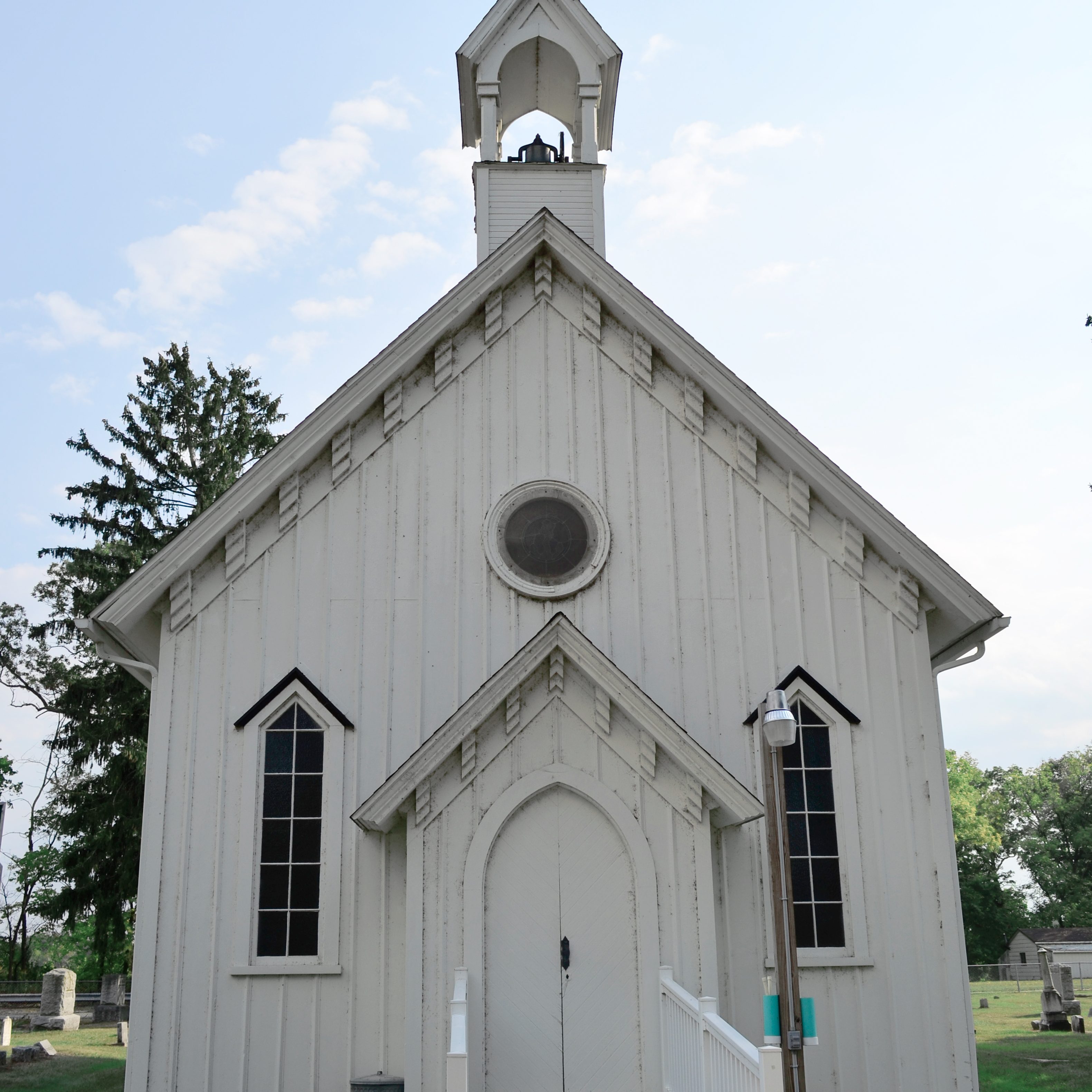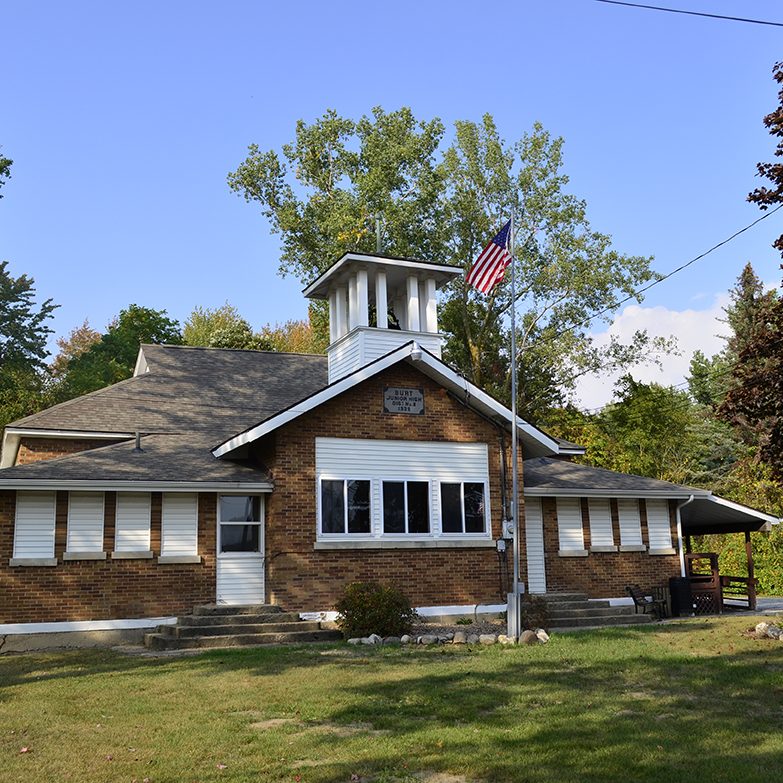Taymouth Township History
Taymouth has a rich history seeded in Native American culture, farming families, and a once thriving railroad industry.
The Railroad Industry
The rail station was to be called “Burt” in honor of the Democratic nominee for governor. It was located on the east side of the tracks, just south of the Burt Opera House. The new track would cover a length of 59 miles, with 26 stops. Depots were built in Burt, Verne and Fosters. In 1900, a spur line was built at Verne Station to accommodate coal from the Verne Coal Mine in Albee Township. Burt was also a major investor in this spur line. As business waned, passenger service was ceased and the Burt Depot was abandoned and torn down in the 1950s.
The Burt Opera House
In 1888, this settlement was named in honor of Wellington R. Burt, the lumber tycoon who arranged for the Cincinnati, Saginaw and Mackinaw Railroad to run through this village. During his 1888 gubernatorial campaign, Burt donated $1,000 for the construction of a township building. Henry Youmans, also seeking an office, supplied the bricks. Ironically, neither man carried this township in the election that year.
Local resident Sarah A. Miller gave the land with a deed stipulating that any structure built be used for “education, social and wholesome amusements, and meetings,” and public gatherings dedicated to “free thought, free speech, and good government.” Townspeople contributed labor and additional funds for the erection of this hall, dedicated in 1891. The Burt Opera House has hosted vaudeville shows, weddings, local fairs township meetings and elections.
Prior to 1959, this 48 star flag flew over the Burt post office for many years. It was encased in a frame and hung in the Opera House in November, 2019.
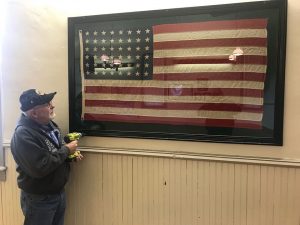
St. Paul’s Episcopal Mission
The Taymouth Historical Association, from its founding, has taken on the restoration of the 1873 St. Paul’s Episcopal Mission Church. It is a project funded by fund raisers, grants and donations. Much of the work is volunteer by members of the Association and the community.
The Episcopal Mission of Taymouth was begun in August, 1873, by the Rev. Charles Thorpe of Lapeer who held monthly services on Sunday, and weekday services on alternate Wednesdays for about a year, in the home of C.M. Cook and the school house. Then the Rev. G.W. Wilson and the Rev. W.H. Watts from Saginaw held the Wednesday meetings until Rev. H.J. Brown, Jr. took charge December 11, 1874.
The Mission was named St. Paul’s Mission, Taymouth. The land was furnished from the farms of D.M. Cook and John McIntosh. An addition to the cemetery was made in 1879 and other additions were made later.
The church building was begun in August 1874, and the corner stone was laid on August 13, with a service by Rev. G.W. Wilson. The building looked much like it does now on the outside, except that it had stained glass windows. The circular window over the door had blue glass with a beautiful white dove. The church was heated by a large iron stove in the front. The floor has round holes to admit heat from under the church. There was a dug out place containing a large flat stove like a hotel cook stove. There was tolled for funerals.
On September 16, 1990 a dedication ceremony was held at the Cook Cemetery for the Historical Marker presented by the Michigan Historical Society for St. Paul’s Episcopal Mission which is located there.
Church Painting Project
Roberts Painting L.L.C recently painted the interior of St. Paul’s Episcopal Mission Church in Cook Cemetery. Here are before, during and after pictures. What a difference! Join us on November 11, 2018 at 11:00 am for our annual Veteran’s Day Ceremony to see the new update.
Before painting
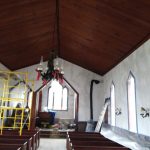
After painting
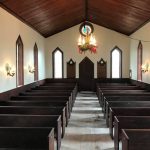
The Taymouth Library
Constructed in 1928, the Taymouth Library was originally the local Junior High School. Even though it now serves as a library, remnants of it’s original design still remains. The original school bell can still be seen hanging up in the steeple.
In 1979 one of the original rooms was renovated and re-purposed to function as a library. The first year of operation was strictly volunteers. The collection of books began with discards from the Saginaw Public Libraries. In 1985 a second room was incorporated, but with the ever expanding inventory, a brand new addition was eventually built.
The library has a nice collection of books, and resources and also provides many community activities and good fun. They offer summer reading programs and adult reading programs.

